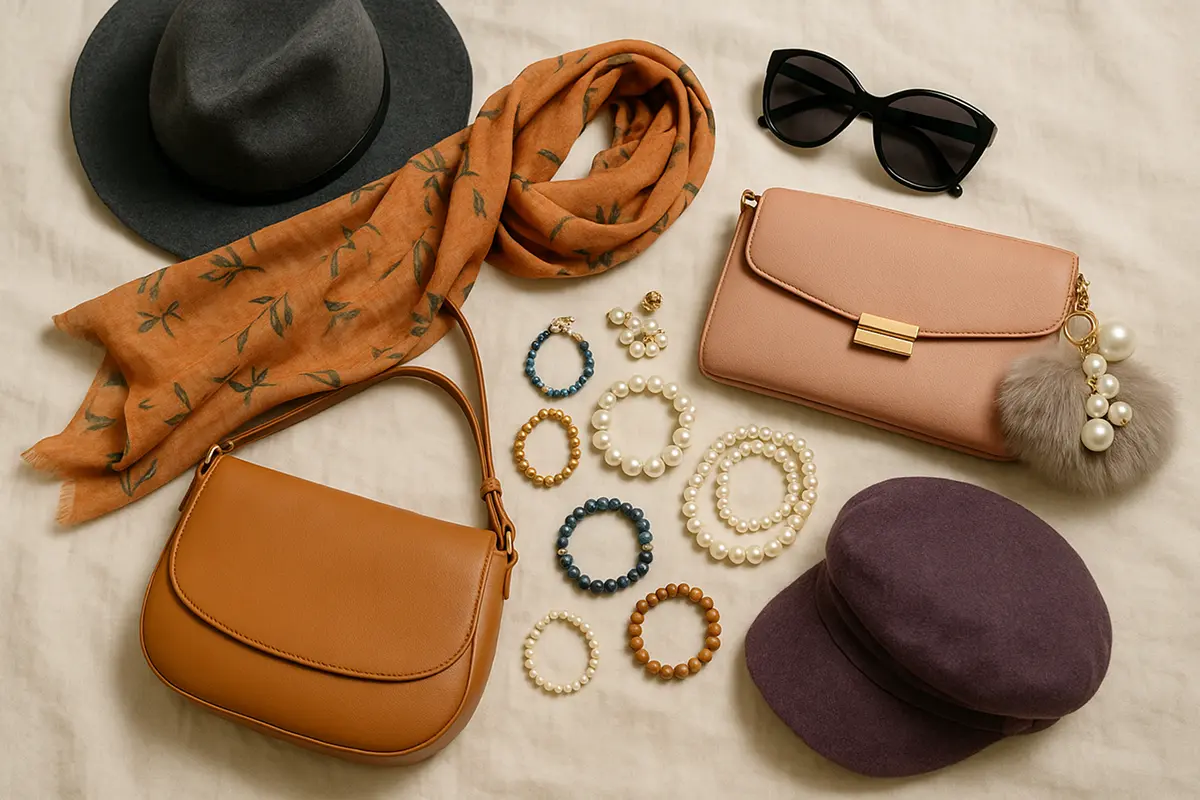
Fashion accessories retail is an ever-changing market. With sunglasses and bracelets, scarves and shoulder bags, accessories are quicker to respond to trends than garments. Brands must innovate and launch products at an increased pace compared to before.
Enter PLM software.
Here, we examine how retailers can streamline accessories product development using PLM (Product Lifecycle Management). Whether earrings, clutch purses, or hair accessories, speed, consistency, and quality are brought from conception to collection using PLM. For an insight into how PLM is revolutionizing another market, discover the effect on cosmetic product development using PLM software.
What Is Considered Accessories in Retail?
Accessories include all non-clothing items that complete an outfit. These range from purses and jewelry to hats and scarves. Some popular types of fashion accessories include:
|
Type |
Examples |
|---|---|
|
Bags |
Shoulder bag, clutch bag, handbags |
|
Jewelry |
Necklaces, earrings, bracelets, beads |
|
Headwear |
Hats, hair accessories |
|
Others |
Sunglasses, lightweight scarves, faux fur |
These products may be small, but managing them at scale requires powerful tools—especially for brands selling through an online store.
Why the Fashion Accessories Industry Needs PLM
The fashion accessories industry faces intense pressure:
- Trends change fast
- SKUs increase constantly
- Fast shipping expectations grow
- Materials like gold, pearl, and faux fur demand tracking
With so many styles, colors, and beads in motion, spreadsheets break. Brands need a central system to create, update, and shop-ready accessories fast.
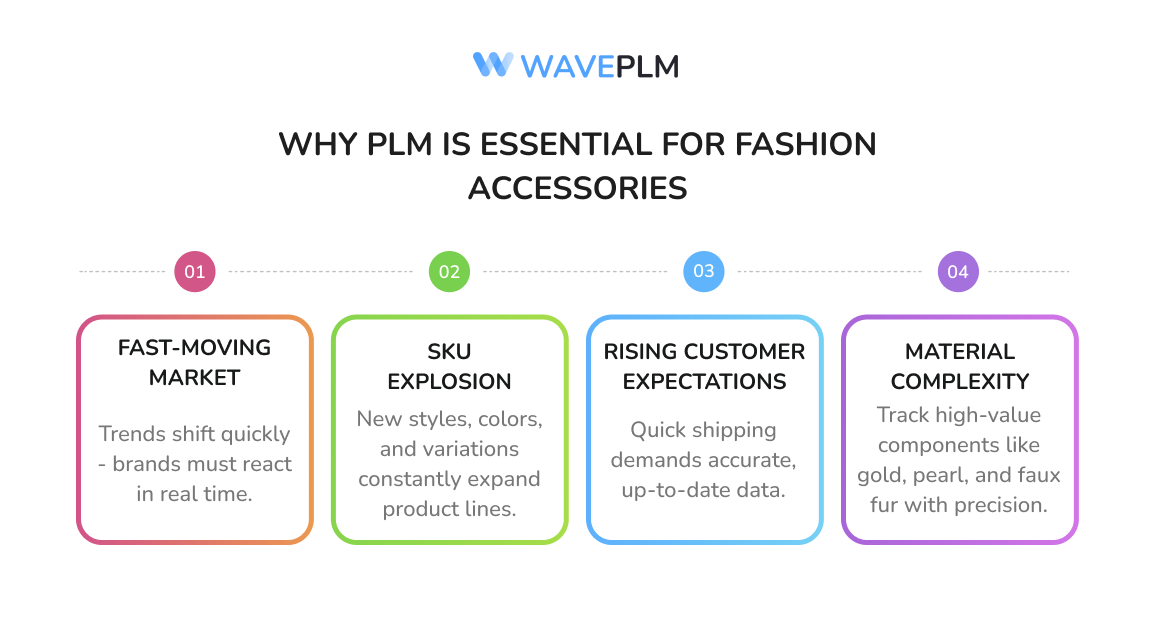
What PLM Brings to Fashion Accessories
Fashion PLM connects every team—from design to sourcing to merchandising. It centralizes details like:
- Materials (fabric, gold accents, faux fur)
- Specs (size, color, fastener type)
- Style variations (two tone bags, orange or pink options)
- Sample tracking
- Vendor communication
- Quality control
This supports quick approvals, better collaboration, and accurate data across all accessories.
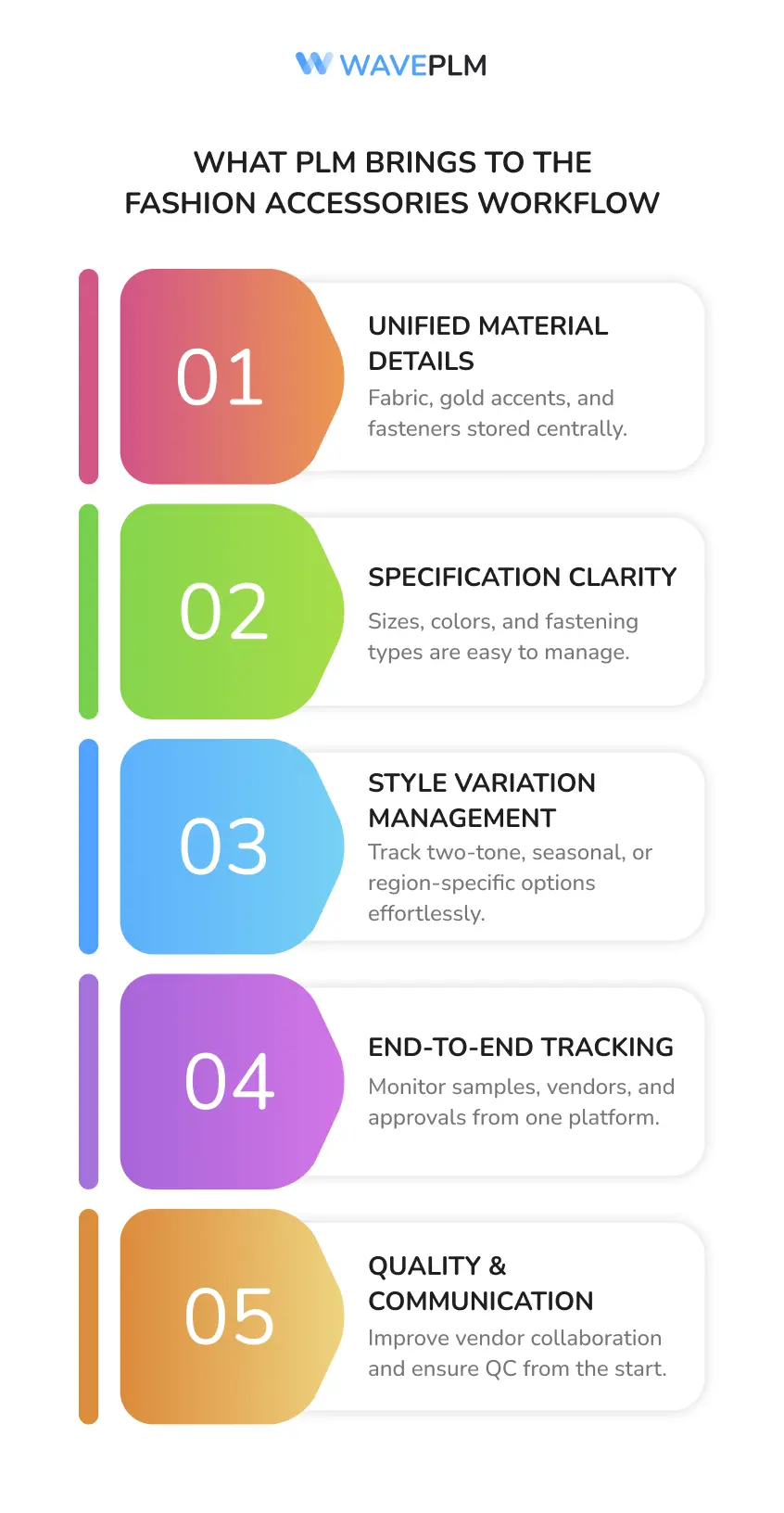
Common Fashion Accessories Challenges
|
Problem |
PLM Solution |
|
Unclear specs |
Create a digital BOM with full details |
|
Multiple versions of files |
Central source of truth |
|
Repetitive sample delays |
Real-time updates with vendors |
|
Compliance complexity |
Store all certifications in one place |
How PLM Helps Create Collections Faster
Want to build a new collection of shoulder bags, pearl earrings, and two tone bracelets? With PLM, your team can:
- Upload sketches and mood boards
- Create tech packs with material and quality details
- Track vendor quotes and samples
- Approve final styles
- Push designs to your shop or online store
From a pink bracelet with gold beads to a sleek clutch bag with faux fur trim, you’ll carry consistency across your entire accessories line.
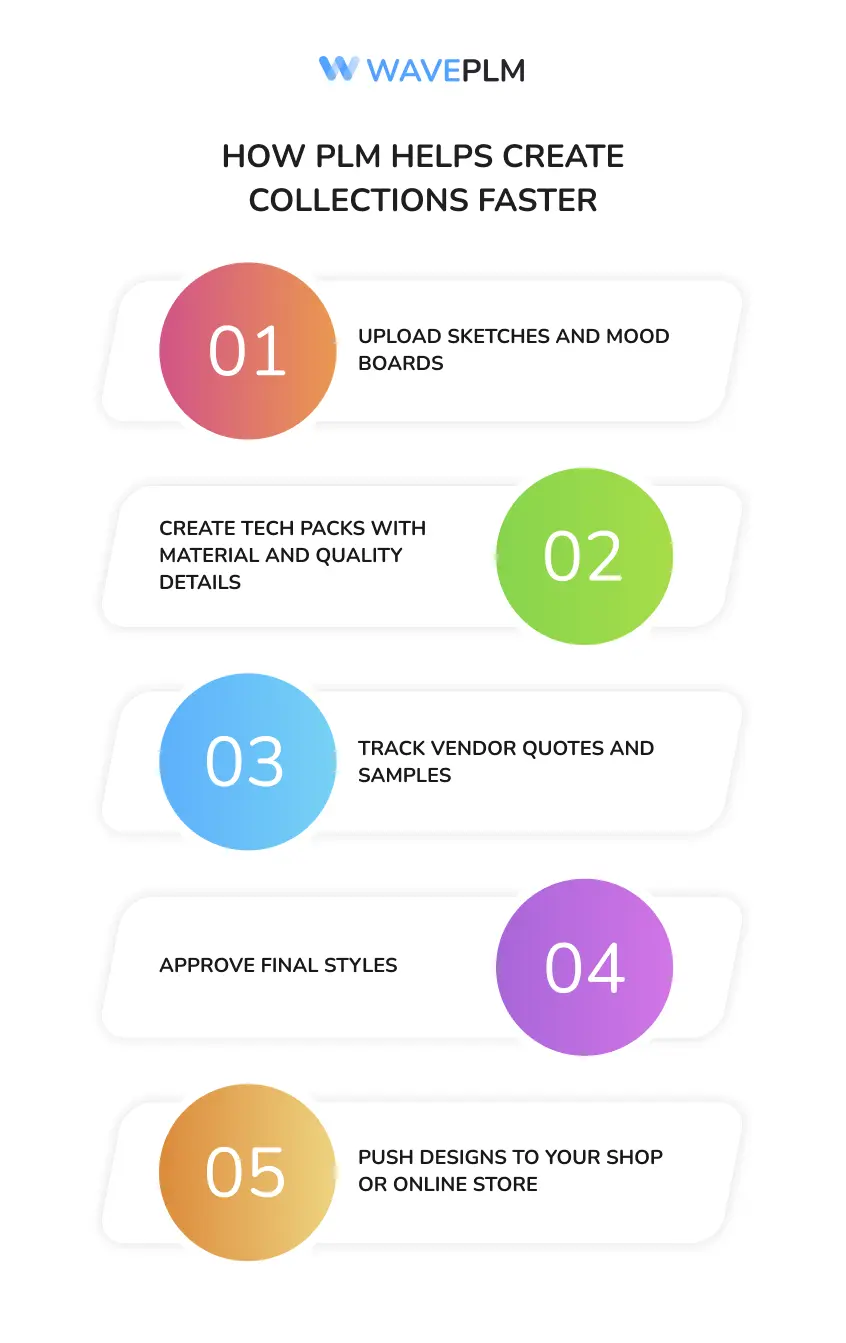
Why Accessories PLM Is a Game-Changer
Here’s how PLM boosts speed and performance:
|
Feature |
Benefit |
|
Retail assortment tools |
Plan by category, color, occasion |
|
Materials library |
Reuse approved fabrics, beads, and trims |
|
Fast vendor access |
Enable quick sample turnaround |
|
Automation |
Assign tasks and create reminders |
|
Reporting |
Analyze price, first order success, vendor performance |
Best Use Cases for PLM in Fashion Accessories
Some accessories benefit more than others from PLM. These include:
|
Accessory |
Why PLM Helps |
|
Bracelets |
Multiple beads, colors, sizes, metals |
|
Earrings |
Track materials like gold and pearl |
|
Shoulder Bags |
Multiple fabrics, trims, and fast shipping needs |
|
Bag Charms |
Mix of materials, styles, and small components |
|
Hair Accessories |
Meet small-part safety standards |
With PLM, these products move from idea to featured shop arrivals with fewer revisions.
Retail Fashion Software Must-Haves
When shopping for accessories PLM, ensure it supports:
- Visual line planning across outfits and colors (blue, orange, pink)
- Digital BOM and material tracking (faux fur, gold, beads)
- Fast shipping support and cost control
- Style variations like two tone options
- Custom fields for gifts, best friends, or first order specials
A Fashion Enthusiast’s Dream: Seamless Collections
Today’s fashion enthusiast wants variety and speed. In today’s fast fashion world, they browse shops for:
- Oversized sunglasses
- Sleek shoulder bags
- Statement pearl necklaces
- Lightweight scarves
PLM empowers your store to deliver fresh accessories that match every wardrobe, mood, and occasion.
FAQs: What You Need to Know
What is a fashion accessory store? A shop or online store that sells non-clothing items like bracelets, earrings, handbags, and hats.
What are examples of fashion accessories? Bag charms, shoulder bags, jewelry, hair accessories, hats, scarves, and sunglasses.
What is a small store selling fashionable clothes or accessories? Often called a boutique, it may specialize in accessories, dresses, or seasonal arrivals.
How do I shop for the perfect touch? Look for collections that feature gold, pearl, two tone styles, or gifts matched to personality and occasion.
Final Thoughts
Accessories retailing is about speed, innovation, and attention to detail. Brands supplement their product quality, reduce errors, and sell with confidence through the use of PLM software. If you are creating beaded bracelets or faux fur hats, fashion tech like Wave PLM can plan, design, and shop-ready your accessories.
Ready to scale your fashion accessories store with better quality and fast shipping? Contact us to discover how Wave PLM supports every accessory you create.

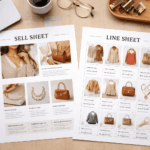
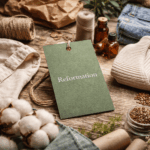


Leave a Reply